
Dawson, New Mexico
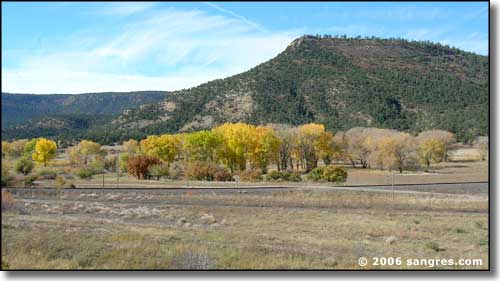
Part of Dawson was down under those Cottonwoods
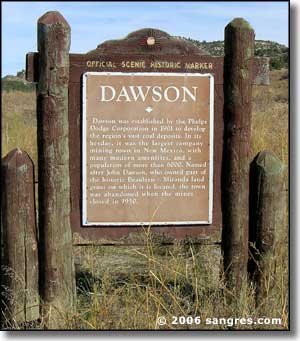
John Barkley Dawson purchased more than 24,000 acres in this valley from the Maxwell Land Grant in 1869. For more than 30 years, he lived here with his family.
Coal was discovered on his property about 1895 but no mining began until 1901 when the Dawson Fuel Company was formed by Charles Eddy and the Company helped bring a railroad spur into the valley from Tucumcari. In 1906, wanting the coal for use on the railroads and for smelting copper from its Arizona mines, the Phelps Dodge Corporation bought out the Dawson Fuel Company.
The fast-rising market for good coal brought rapid development to Dawson and the town quickly reached a population of about 9,000, including many immigrants from places like Germany, Italy, Poland, Greece, Great Britain, Ireland, Finland, Yugoslavia, Mexico and Sweden.
In town there was a community swimming pool, golf course, opera house, hotel, hospital and the company maintained very comfortable homes for everyone. The Company Store - The Phelps Dodge Mercantile Company - was a department store that sold everything from furniture, hardware, clothing, drugs, food, fresh baked goods, jewelry, and ice from its own ice plant.
There were four schools serving more than 1200 students in the 1920's. But times changed and the country made a switch from coal to natural gas and oil and Dawson was finally shut down on April 30, 1950. The buildings were soon all either relocated to nearby towns or completely torn down. Of the mining equipment, everything salvagable was removed and sold.
On April 9, 1992, the Dawson Cemetery was placed on the National Register of Historic Places. The Cemetery met the criteria for this honor through its association with immigration patterns, coal mining, company towns, and the fact that the cemetery contains the buried remains of the dead from two of American coal mining's biggest disasters. On October 22, 1913, 263 men were killed in an underground explosion at the mine. Another 122 men were killed by another underground explosion on February 8, 1923.
More than 1,000 former residents and their descendants and friends have attended a biennial reunion at the Dawson Cemetery over the Labor Day Weekend ever since the town was closed back in 1950. Except for the Cemetery, almost nothing remains in the area to show that more than 32 million tons of coal were removed from the earth here and that Dawson was one of the largest towns in New Mexico in the 1920's.
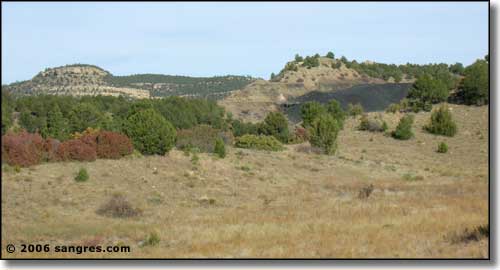
Coal slag from one of the mines
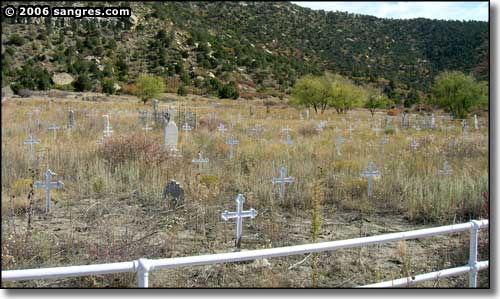
Iron crosses in the cememtery
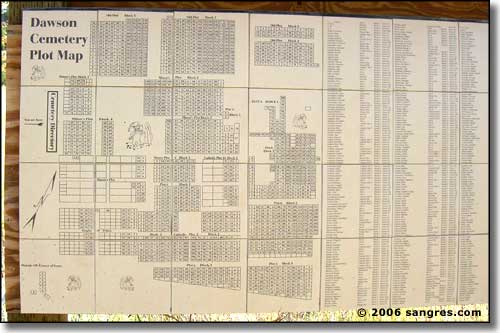
A map of the Dawson Cemetery plots
